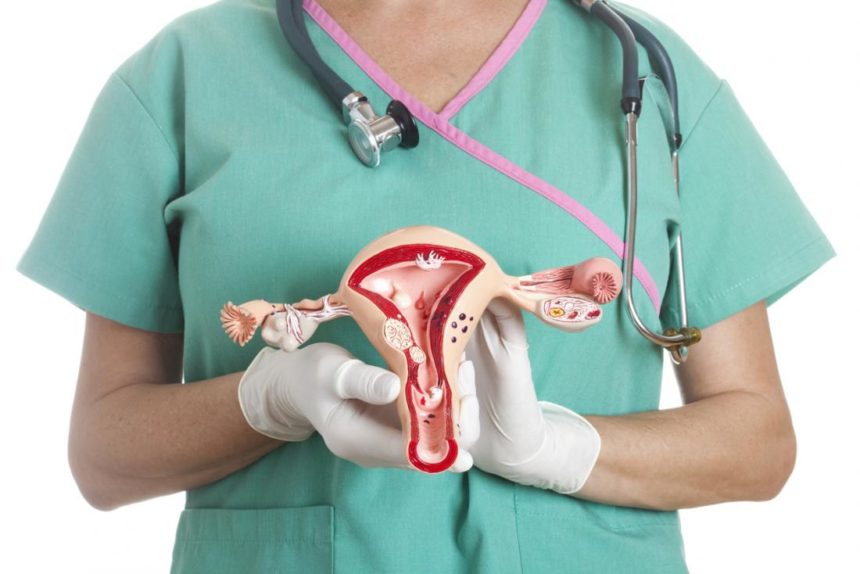Cancer, a deadly disease in which the cells of the body grow rapidly and uncontrollably, always takes its name from the part of the body where it starts, even if it spreads to other parts of the body inevitably. Such a cancer is Cervical Cancer, which starts in the cervix and is the second most common cancer among women worldwide, representing 13 percent of female cancers, but it is also the easiest gynecologic cancer that is preventable with regular screening and follow-up. With an estimated 529,409 new cases and 274,883 deaths in 2008, about 86 percent of Cervical Cancer cases occur in developing countries.
In Bangladesh the crude incidence rate of cancer in cervix uteri was 12.4 per 100,000 women. The majority of cases are squamous cell carcinoma. Adenocarcinomas are less common. The Human Papillomavirus, or HPV, among women has a well-established etiological role with cervical cancer. HPV is the leading cause of Cervical Cancer. With 4 out of 5 people contracting HPV at some time in their lives, HPV is so common that it can be considered normal for anyone with an active sex life. In most people, HPV clears up naturally in one to two years, but in a small number of women, HPV stays in the cells of the cervix. This infection increases the risk of cervical cancer.
HPV is commonly found in the anogenital tract of men and women with and without clinical lesions. HPV cervical infection results in cervical morphological lesions ranging from normalcy to different stages of precancerous lesions (CIN-1, CIN-2 and CIN-3/CIS) and invasive cervical cancer. In western countries, HPV-16 and 18, the two vaccine-preventable types, contribute to over 70 percent of all cervical cancer cases, between 41 percent and 67 percent of high-grade cervical lesions and 16-32 percent of low-grade cervical lesions. After HPV-16/18, the six most common HPV types are the same in all world regions, namely 31, 33, 35, 45, 52 and 58, which collectively account for an additional 20 percent of cervical cancer cases. Prostaglandin, a naturally occurring hormone-like molecule found in semen as well as in the cells that line the female reproductive organs to regulate cell growth and direct the womb lining, can aggravate cervical cancer.
Researchers from the Medical Research Council’s Human Reproductive Sciences Unit at The University of Edinburgh have found that that the high concentration of prostaglandin in semen makes other diseases of the female reproductive organs worse – including utero-cervical cancer. Cervical and womb (uterine) tumour cells have prostaglandin receptor molecules on their surface and influx of prostaglandin in semen boosted the normal level of signaling between cells. This high volume starts new cascades of signals that eventually lead to an increase in tumour growth. Another factor for cervical cancer is smegma which accumulates under the foreskin of male sexual organ.
Circumcision of men reduces the chances of developing cervical cancer from smegma. In addition, besides HPV and seminal influence, there are several co-factors for Cervical Cancer such as smoking, HIV infection, chlamydia infection, dietary factors, hormonal contraception, multiple pregnancies, exposure to the hormonal drug diethylstilbestrol (DES), and family history of cervical cancer. But, the officially-endorsed and medically-accepted paradigm by the American Cancer Society is that a patient must have been infected with HPV to develop cervical cancer, and is hence viewed as a sexually-transmitted disease, although most women infected with high-risk HPV will not develop Cervical Cancer. So, use of condoms reduces, but does not always prevent, transmission. In developing countries like Bangladesh, HPV-related research has only recently started and much data needs to be collected to conclusively establish the leading cause of Cervical Cancer in Bangladesh. One school of thought predicts that since Bangladesh has very few cases of HIV infection, the number of HPV-related cervical cancer cases is also small. (Source: A. K. Khan Health Care Trust)
The idea for A K Khan Healthcare Trust to start the Outreach Program evolved from the 2008 HPV vaccination programme, and the original intention was to complement its hospital activity using hospital resources to offer targeted healthcare services and awareness campaigns. Instead, the standalone Outreach Program was launched ahead of the hospital project. The initial challenge of the Outreach Programme was to short-list the activities and services, and the decision made was to screen and treat Cervical Cancer. Since UNFPA was conducting a large-scale cervical cancer screening programme in Bangladesh at the time using a low cost technique commonly known as VIA, UNFPA doctors provided guidance at BSMMU Post Graduate institute to diagnose and treat the precancerous states of Cervical Cancer using VIA, Colposcopy, and LEEP. A K Khan Healthcare Trust decided to follow the same procedure for its work, and although UNFPA had already covered 65 major districts of Bangladesh, A K Khan Healthcare Trust decided to start the Outreach Program at Korail Slum, the largest slum in Dhaka city. The programme offered all the services free of cost.
The main objectives of the Outreach Program are screening, early detection, treatment and awareness of cervical cancer. Using a combination of Visual Inspection with Acetic Acid (VIA) and Loop Electrosurgical Excision Procedure (LEEP), a patient can be diagnosed and treated when she is in the precancerous state of cervical cancer. This low cost yet effective screening and treatment prevents the person from developing cervical cancer. In addition, the Trust is providing free-of-cost screening, early detection and awareness services for breast cancer, oral cancer and other non-communicable diseases.
Diabetic Association of Bangladesh is currently providing clinical support to the Trust for conducting this programme at the slum. The clinic staff and officials include the Programme Coordinator and Co-coordinator, Clinical Coordinator & Principal Investigator, two Medical Officers, Nurse, four Health Workers, Project Officer, Field Officer, Cleaner and Security Guard, who are engaged regularly in the clinic activities. The services are provided from 9:00 am to 5:00 pm (Saturday to Thursday).
On October 2010, cervical cancer screening and treatment by A K Khan Healthcare Trust was started. The clinic had two colposcope, an Electrical Surgical Unit and two generators. For the antenatal care clinic there was a portable ultrasound. Once a week doctors did ultrasound screening on referral cases from other NGOs working at the slum. The scope of the Outreach Programme was expanded without increasing cost thru discounted, on-credit drug-procurement agreements with Pharmaceutical companies. Green Delta Insurance and Paramount Textile also contributed Taka 50,000 monthly donation for the Outreach Programme.
On the training side, Prof Dr. Syed Mukarram Ali of Delta Cancer Hospital and Prof Dr. T A Chowdhury of BIRDEM made significant contributions. Dr. A K Goodman of Massachusetts General Hospital trained the local doctors on the clinical procedure. To date, AKKHT Outreach Programme has screened around 3,000 women between the ages of 15 and 45, with only three diagnosed positive for Cervical Cancer and none with breast or oral cancer. Professor Richard Cash of Harvard School of Public Health had informed AKKHT of the low prevalence of HIV/AIDS, thereby making a high number of cervical cancer cases unlikely, although there is a high number of cases of patients with chronic cervicitis. Through health awareness and promoting better hygiene practices these sort of health problems (i.e. cervicitis) can be eradicated.
Contributors: Tanvir Raquib, Samanzar Khan, Dr. Mithila Farooque, Dr. Esha Faruq, Dr. Sayeda Sharmin Ali, Syeda Mahboba Mansoor, Habibur Rahman, Farhana Boby, Shadab Mahmud, Dr. Rupa Patel


Leave a Reply